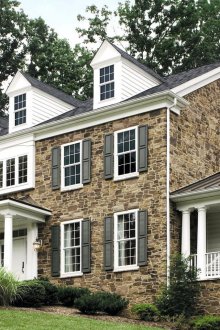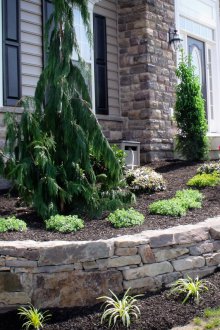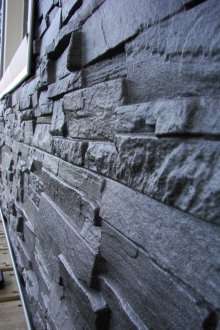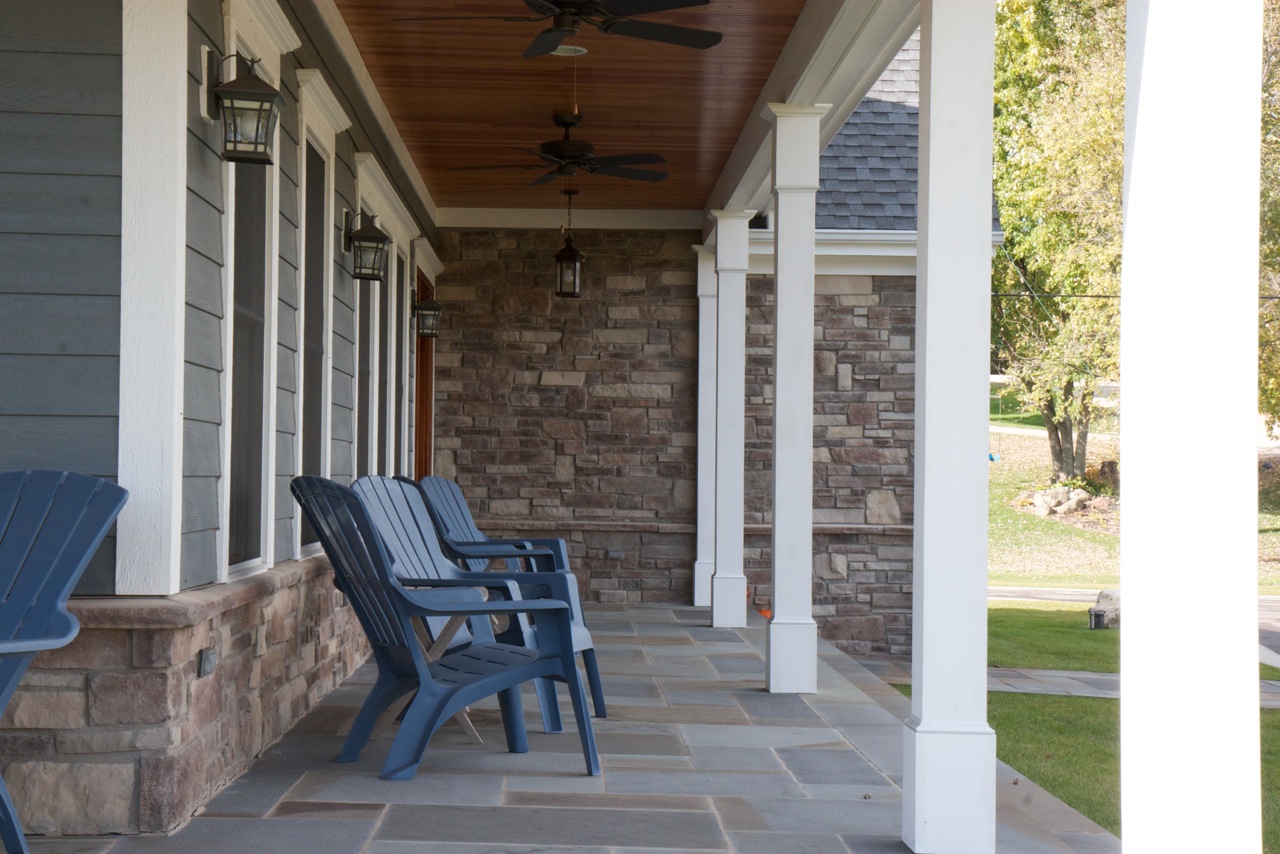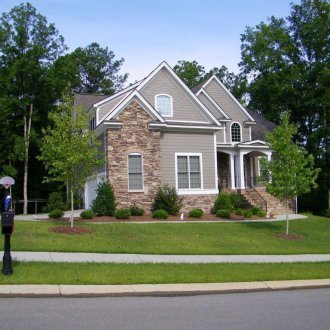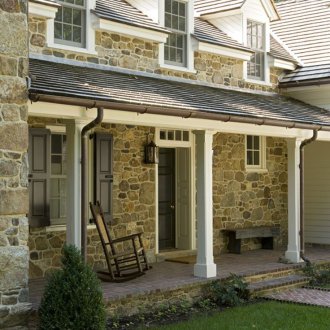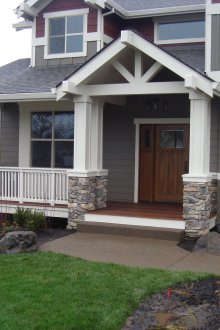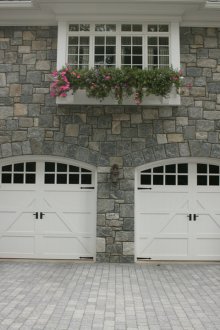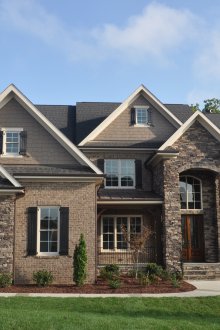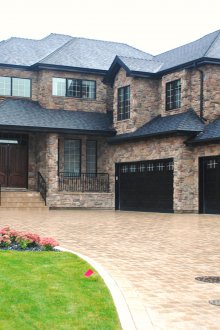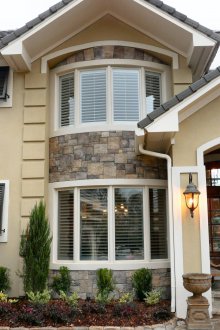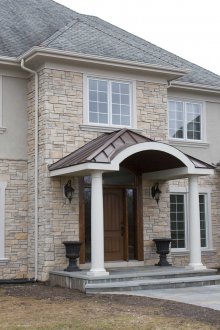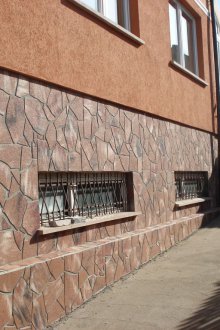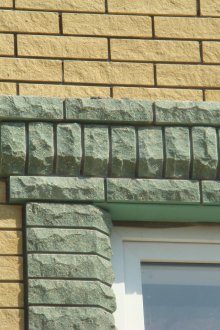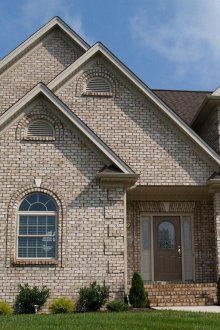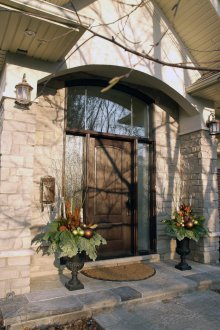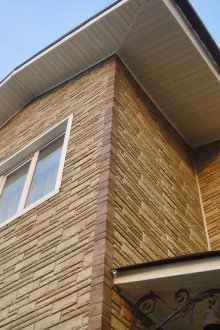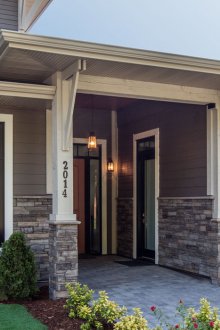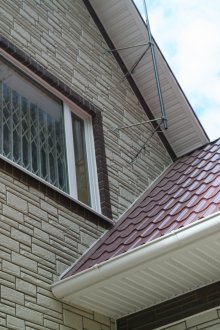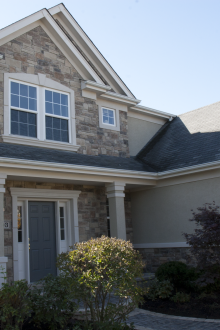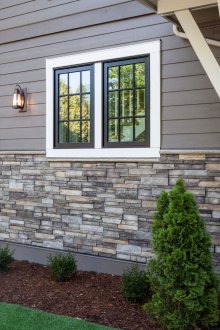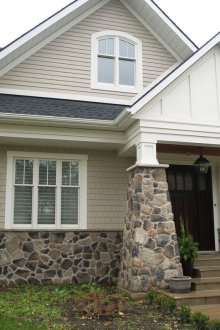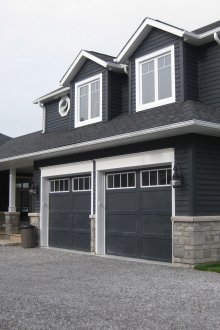The use of basement siding under the stone (27 photos)
Content
The construction market has replenished with new finishing material that perfectly imitates natural stone. Basement siding under a stone (limestone, granite, sandstone, dolomite), which has gained wide popularity among developers, owners of private houses and summer cottages, is most often represented by the collections of “rocky stone” and “rubble stone”. Inexpensive decorative material is available to every consumer, with it it has become much easier and cheaper to perform the cladding of the exterior walls of the building. What features does decorative finishing material have?
Varieties of basement siding under the stone
Siding coating is an original decorative finish for the base. Wild stone siding is made from various materials, so the characteristics of the composite vary, and this must be taken into account when choosing a facade siding for a stone. It is worth considering each type separately, which will help in the future to make the right choice of cladding for exterior decoration.
Vinyl
The most sought after and best-selling vinyl stone siding. For manufacturing, polyvinyl chloride of improved characteristics is used, which contains numerous additives that increase wear resistance.
The popularity of vinyl cladding is influenced by several factors:
- Plastic siding is light in weight, so there is no additional load on the foundation and walls.
- Large thickness compared to other analogs of PVC is 3 mm.
- Resistance to mechanical damage.
- Good protection against ultraviolet rays, which makes the appearance of the cladding unchanged throughout the entire operational period.
Vinyl siding in "stone" design is the optimal solution for facing the basement. For a short period and regardless of weather conditions, a large amount of work is performed. In addition, you have to invest significantly less money.
Cladding with a stone siding made of vinyl is lightweight, so it can be used for dilapidated buildings, which will make them not only attractive from the outside, but also more resistant to atmospheric influences.
Metal
Metal siding made of stone is made of galvanized steel, aluminum and zinc. The most common is the first option, as it is characterized by excellent performance and low price. Before galvanized sheets get the desired shape and the texture of natural stones is stamped on them, the metal surface is covered with a protective polymer layer, which can withstand external adverse effects of atmospheric phenomena and prevents the formation of corrosion.
The main advantages over analogues of vinyl are:
- Strength;
- Resistance to temperature extremes;
- High fire safety.
Unlike vinyl siding, the “wild stone” in the metal version does not have such an attractiveness, since it does not have a real transfer of embossed texture. Although from afar it impresses with its presentable appearance, but this is not the only minus for the finishing material.A significant drawback is the inability to perform fitting, as the products of many manufacturers are not susceptible to cutting.
Fiber cement
A special place among the varieties of finishing basement siding is fiber siding. For its manufacture high quality cement is used. Form reinforcement is performed using cellulose and fiberglass, polymers. This is the best imitation of wild stone: the picture is clearly displayed on the panels, and it is very difficult to distinguish them from natural samples.
The advantages of fibropanels include:
- High rates of wear resistance;
- Impact resistance;
- Sufficient thickness - from 8 to 35 mm;
- Resistance to low and high temperatures;
- Incombustibility;
- A variety of color schemes and textures;
- The presence of a polymer layer, which provides reliable protection against excessive moisture and enhances non-burnability.
However, fibropanels also have drawbacks; their weight is much greater than that of metal siding and vinyl analogues. The house sheathing is carried out by a team of at least two people.
Features of decorative panels
The most common and popular types of stone siding:
- Dolomite finish is light lime and sandy shades and looks very natural.
- Rocky stone can satisfy the needs of numerous consumers. With the help of such panels an attractive relief of the basement is created, which is no different from manual work. Imitation rocky stone is presented in vinyl and fibropanel execution. The rocky stone collection is 5 varieties of panels that have the following names “Alps”, “Tibet”, “Altai”, “Palmyra”, “Caucasus”.
- White stone is distinguished by sophistication and attractiveness, gives the building a special beauty and originality.
- Rubble stone is an ideal solution for cladding a house and in particular a basement. A distinctive feature of rubble stone are large forms of cobblestones. The color scheme is fully consistent with natural samples. By lining the basement of the house with panels in the “rubble stone” simulation, you can achieve the desired result without much effort.
- Granite siding is suitable not only for the decoration of the basement of the building, but also for the external and internal wall cladding. Colors range from light gray to black.
Strengthen the walls and the entire structure of the building using granite siding. This is one of the simplest and most inexpensive ways to quickly completely transform a house, cottage and any other building.
Advantages of siding base panels
A wide variety of options makes siding under artificial stone indispensable in the design of the facade of the building. The composite is different:
- A variety of design and color solutions.
- Ecological purity of raw materials.
- Simple installation, which allows to reduce the time required for facing.
- The best combination of price and quality.
- Strength and durability. Finished stone siding finish will last a long period, during which the base will not lose its beautiful appearance.
Installation of siding panels can be carried out at any time of the year.
Ways to use casing in the interior and exterior
Basement siding - a wide range of panels in a wide variety of relief patterns, shapes and colors. Such a variety of varieties is not present in every decorative material. At the same time, the installation of vinyl and cement panels is carried out both on the front of the buildings and in the premises. Walls can be decorated fully or in separate areas, combining with other modern finishing materials. For example, with smooth plaster, the rocky terrain looks great. The imitation of cobblestones on the base is combined with the usual siding panels on the facade, but it is in no way suitable for a small house with a high base.
There are a lot of options for combinations, so the design of the building must be carefully thought out and the best chosen. Optimal is the visual demarcation of the basement of the building and the wall, for this you can select the facing material of different textures or shades. Siding can be veneered hallways, kitchens, halls of hotels and public buildings. The choice of options is always large, the main thing is to find the only right solution.



